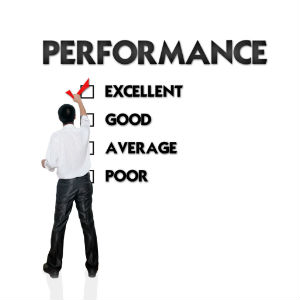A performance management system prevailing in an organization is almost never a perfect one owing to several types of inaccuracies and biases often creeping in. Majority of these inaccuracies are committed unintentionally by the appraisers – they are not aware that how the environment or their own thought processes are preventing an appraisal process from being unbiased. Having said so, it’s also undeniable that some of the biases exhibited in a performance management process are intentional.
The intentional errors or inaccuracies can be categorized as Leniency or Inflation error, Severity or strictness or deflation error and Central Tendency error. As the name suggests, leniency error takes place when the appraiser shows undue leniency while rating a candidate and inflates the rating that the candidate actually deserves. On the contrary, when an appraiser shows too much strictness or severity and assigns a deflated or lower-than-deserved rating, he is demonstrating Severity error. In Central Tendency error, appraiser gives an average rating to most of the candidates.
Now let’s check various unintentional biases that are committed during the appraisal process:
– Halo/Horn effect – this takes place when appraiser gets influenced by one particular trait of the candidate and draws conclusion about the candidate without assessing other traits of the candidate. So, the assessment or appraisal is driven by what impression the appraiser has drawn from a particular trait of a candidate. Halo error takes place when the appraiser is positively impressed and horn error takes place when the appraiser forms a negative image of the candidate based on some particular trait of that person.
– Similar to me error – Appraiser notices some similarity between himself and the candidate being evaluated and that clouds his judgemental abilities. Appraiser ends up giving a better rating to the candidate than what he deserves.
– Primacy error – Appraiser focuses on information that he received or the impression that he formed about the candidate earlier during the appraisal process and decides on the rating based on that.
– Recency error – This is reverse of the primacy error. Appraiser is influenced more by the information garnered or impression formed during the later or most recent stages of the appraisal process.
– First Impression error – appraisal done is based on the first impression that a candidate made on the mind of the appraiser.
– Contrast error – Appraiser consciously or unconsciously compares or contrasts the current candidate with the previous candidates he assessed and tends to over-emphasize on the differences between candidates. For example, if one candidate that the appraiser appraised was a super performer, then while assessing another candidate who is a good-enough performer, appraiser will tend to give him a relatively poor rating than what this candidate deserves.
– Stereotype error or Stereotyping – Appraiser has a preconceived notion about a candidate just because the candidate falls in a certain category based on gender, race, nationality, ethnicity etc. Appraiser allows that preconceived notion to take precedence over actual performance delivered by the candidate while assigning a rating.
– Spillover effect – Appraiser is influenced and guided by the past performance history or past evaluation result while rating a candidate, although the current performance is different from that of the past.
– Attribution bias – Appraiser wrongly attributes the good performance or behaviour of a candidate to external factors and poor or bad performance and behaviour to internal characteristics of traits of the candidate.
While occurrences of intentional errors can be minimized by educating appraisers about the benefits of giving a proper and unbiased rating, unintentional errors can be eliminated or minimized by letting the appraisers know about the types of inaccuracies and why they occur and how those can be consciously avoided. If needed, suitable training programmes can also be developed to increase awareness about the various types of biases and errors and the ways to eliminate them.





5 Comments. Leave new
Good effort!
Nice..
Well written..
Nicely written!
well written..